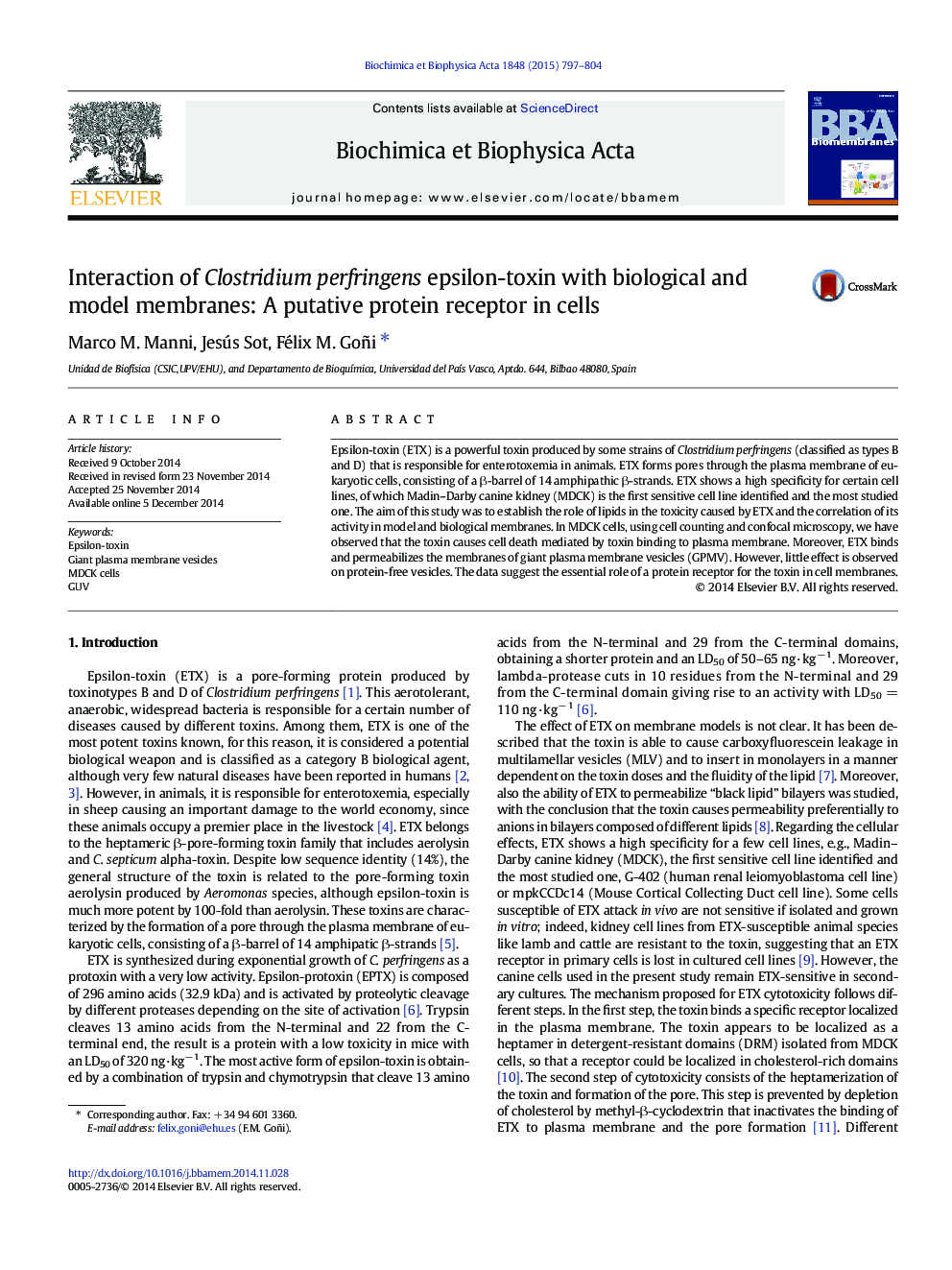| Article ID | Journal | Published Year | Pages | File Type |
|---|---|---|---|---|
| 1944033 | Biochimica et Biophysica Acta (BBA) - Biomembranes | 2015 | 8 Pages |
•Epsilon-toxin (ETX) is a powerful toxin produced by some strains of Clostridium perfringens.•ETX forms pores through the plasma membrane of eukaryotic cells.•The toxin causes cell death mediated by toxin binding to plasma membrane.•Little effect is observed on protein-free vesicles of various lipid compositions.•The data suggest the presence of a protein receptor for ETX in cell membranes.
Epsilon-toxin (ETX) is a powerful toxin produced by some strains of Clostridium perfringens (classified as types B and D) that is responsible for enterotoxemia in animals. ETX forms pores through the plasma membrane of eukaryotic cells, consisting of a β-barrel of 14 amphipathic β-strands. ETX shows a high specificity for certain cell lines, of which Madin–Darby canine kidney (MDCK) is the first sensitive cell line identified and the most studied one. The aim of this study was to establish the role of lipids in the toxicity caused by ETX and the correlation of its activity in model and biological membranes. In MDCK cells, using cell counting and confocal microscopy, we have observed that the toxin causes cell death mediated by toxin binding to plasma membrane. Moreover, ETX binds and permeabilizes the membranes of giant plasma membrane vesicles (GPMV). However, little effect is observed on protein-free vesicles. The data suggest the essential role of a protein receptor for the toxin in cell membranes.
Graphical abstractGFP-labeled epsilon-toxin binding and entering GUV made of MDCK plasma membranes.Figure optionsDownload full-size imageDownload high-quality image (231 K)Download as PowerPoint slide
